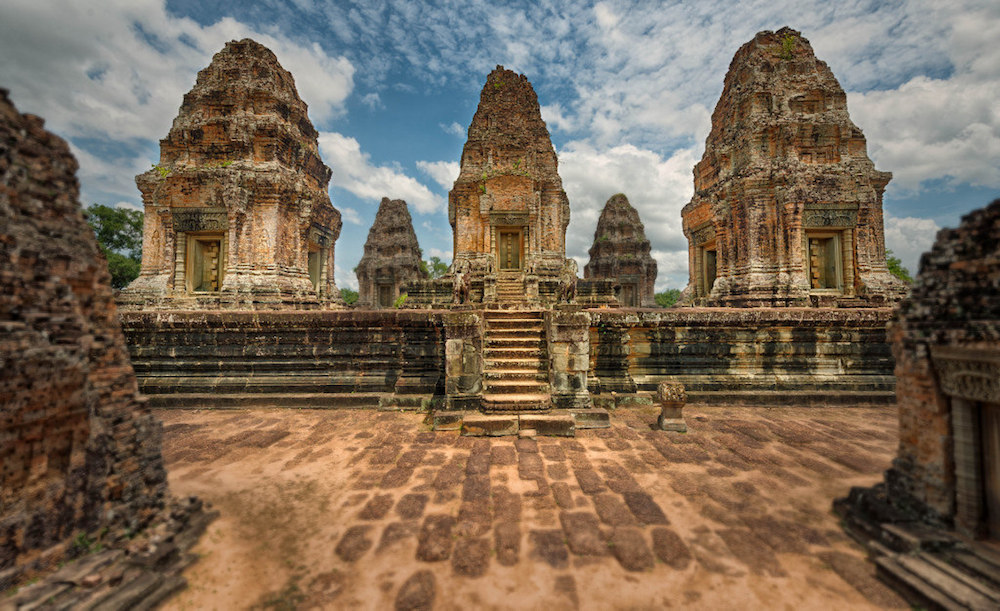
First rule: There are no rules. These resources are completely free and at your disposal. Use as much, or as little, as you want. Study casually, or work to create a portfolio of academic work that will blow the socks off of the educational establishment.
Feel free to adapt the materials for your own purposes. We expect families, business people, backpackers, college students, high school kids, middle aged vacationers, and retirees who are on a late life adventure to take these materials and run with them. We’d be very happy for teachers or travel group leaders to add these materials to their study abroad packets as well.
The nature of open source is collaboration, so please feel free to contribute when you become aware of resources we haven’t listed, or you have project ideas that we haven’t developed. Send us your work and inspire others to reach higher and deeper as they travel!
Our goal with this project is to inspire adventure and further education through experiential learning around the world. Please send us a note and let us know how you used these resources!
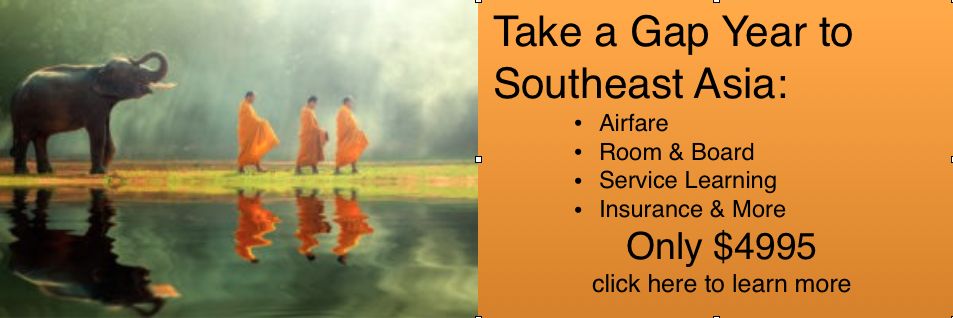
Buffet Style Learning
Does the menu look overwhelming? Looking for a formula to use as a skeleton for your studies in Cambodia?
Choose:
- Two books
- Two films
- Three articles
- One Problem & Solution or Project Option
- One Cultural Assignment
Table of Contents
- Books
- Books for Kids
- Films
- Articles
- Project Options
- Problems & Solutions
- Cultural Assignments
- Create Your Own Coursework
Book Recommendations
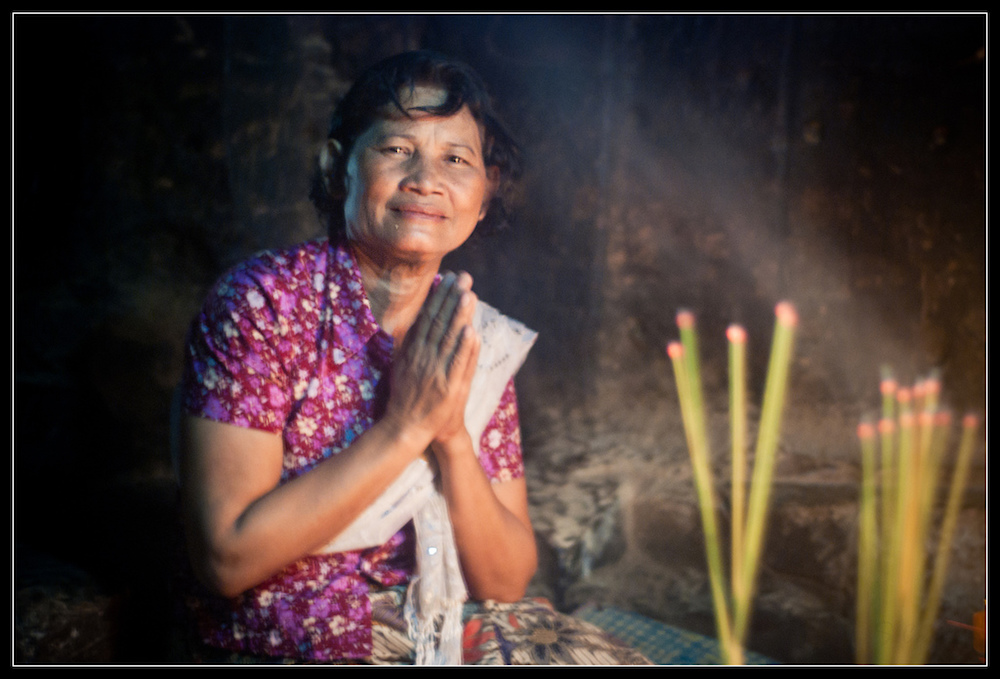
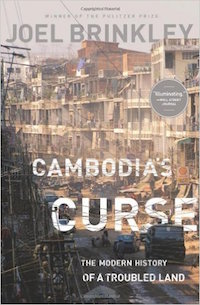 Cambodia’s Curse: The Modern History of a Troubled Land
Cambodia’s Curse: The Modern History of a Troubled Land
by Joel Brinkley
A generation after the Khmer Rouge, Cambodia shows every sign of having overcome its history–the streets of Phnom Penh are paved; skyscrapers dot the skyline. But under this façade lies a country still haunted by its years of terror.
Joel Brinkley won a Pulitzer Prize for his reporting in Cambodia on the fall of the Khmer Rouge regime that killed one quarter of the nation’s population during its years in power. In 1992, the world came together to help pull the small nation out of the mire. Cambodia became a United Nations protectorate–the first and only time the UN tried something so ambitious. What did the new, democratically-elected government do with this unprecedented gift?
In 2008 and 2009, Brinkley returned to Cambodia to find out. He discovered a population in the grip of a venal government. He learned that one-third to one-half of Cambodians who lived through the Khmer Rouge era have P.T.S.D.–and its afflictions are being passed to the next generation. His extensive close-up reporting in Cambodia’s Curse illuminates the country, its people, and the deep historical roots of its modern-day behavior.
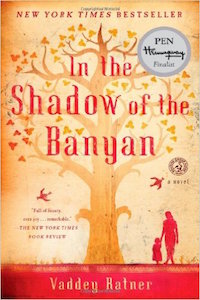 In the Shadow of the Banyan: A Novel
In the Shadow of the Banyan: A Novel
by Vaddey Ratner
You are about to read an extraordinary story, a PEN Hemingway Award finalist “rich with history, mythology, folklore, language and emotion.” It will take you to the very depths of despair and show you unspeakable horrors. It will reveal a gorgeously rich culture struggling to survive through a furtive bow, a hidden ankle bracelet, fragments of remembered poetry. It will ensure that the world never forgets the atrocities committed by the Khmer Rouge regime in the Cambodian killing fields between 1975 and 1979, when an estimated two million people lost their lives. It will give you hope, and it will confirm the power of storytelling to lift us up and help us not only survive but transcend suffering, cruelty, and loss.
For seven-year-old Raami, the shattering end of childhood begins with the footsteps of her father returning home in the early dawn hours, bringing details of the civil war that has overwhelmed the streets of Phnom Penh, Cambodia’s capital. Soon the family’s world of carefully guarded royal privilege is swept up in the chaos of revolution and forced exodus. Over the next four years, as the Khmer Rouge attempts to strip the population of every shred of individual identity, Raami clings to the only remaining vestige of her childhood—the mythical legends and poems told to her by her father. In a climate of systematic violence where memory is sickness and justification for execution, Raami fights for her improbable survival. Displaying the author’s extraordinary gift for language, In the Shadow of the Banyan is a brilliantly wrought tale of human resilience.
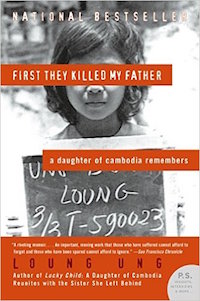 First They Killed My Father: A Daughter of Cambodia Remembers
First They Killed My Father: A Daughter of Cambodia Remembers
by Loung Ung
One of seven children of a high-ranking government official, Loung Ung lived a privileged life in the Cambodian capital of Phnom Penh until the age of five. Then, in April 1975, Pol Pot’s Khmer Rouge army stormed into the city, forcing Ung’s family to flee and, eventually, to disperse. Loung was trained as a child soldier in a work camp for orphans, her siblings were sent to labor camps, and those who survived the horrors would not be reunited until the Khmer Rouge was destroyed.
Harrowing yet hopeful, Loung’s powerful story is an unforgettable account of a family shaken and shattered, yet miraculously sustained by courage and love in the face of unspeakable brutality.
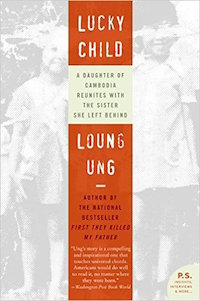 Lucky Child: A Daughter of Cambodia Reunites with the Sister She Left Behind
Lucky Child: A Daughter of Cambodia Reunites with the Sister She Left Behind
by Loung Ung
After enduring years of hunger, deprivation, and devastating loss at the hands of the Khmer Rouge, ten-year-old Loung Ung became the “lucky child,” the sibling chosen to accompany her eldest brother to America while her one surviving sister and two brothers remained behind. In this poignant and elegiac memoir, Loung recalls her assimilation into an unfamiliar new culture while struggling to overcome dogged memories of violence and the deep scars of war.
In alternating chapters, she gives voice to Chou, the beloved older sister whose life in war-torn Cambodia so easily could have been hers. Highlighting the harsh realities of chance and circumstance in times of war as well as in times of peace, Lucky Child is ultimately a testament to the resilience of the human spirit and to the salvaging strength of family bonds.
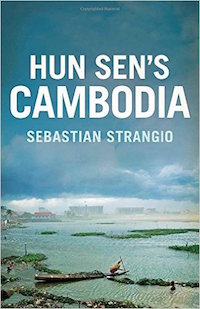 Hun Sen’s Cambodia
Hun Sen’s Cambodia
by Sebastian Strangio
A fascinating analysis of the recent history of the beautiful but troubled Southeast Asian nation of Cambodia.
To many in the West, the name Cambodia still conjures up indelible images of destruction and death, the legacy of the brutal Khmer Rouge regime and the terror it inflicted in its attempt to create a communist utopia in the 1970s. Sebastian Strangio, a journalist based in the capital city of Phnom Penh, now offers an eye-opening appraisal of modern-day Cambodia in the years following its emergence from bitter conflict and bloody upheaval.
In the early 1990s, Cambodia became the focus of the UN’s first great post–Cold War nation-building project, with billions in international aid rolling in to support the fledgling democracy. But since the UN-supervised elections in 1993, the nation has slipped steadily backward into neo-authoritarian rule under Prime Minister Hun Sen. Behind a mirage of democracy, ordinary people have few rights and corruption infuses virtually every facet of everyday life. In this lively and compelling study, the first of its kind, Strangio explores the present state of Cambodian society under Hun Sen’s leadership, painting a vivid portrait of a nation struggling to reconcile the promise of peace and democracy with a violent and tumultuous past.
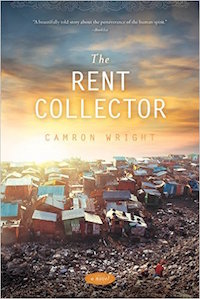 The Rent Collector
The Rent Collector
by Camron Wright
Survival for Ki Lim and Sang Ly is a daily battle at Stung Meanchey, the largest municipal waste dump in all of Cambodia. They make their living scavenging recyclables from the trash. Life would be hard enough without the worry for their chronically ill child, Nisay, and the added expense of medicines that are not working. Just when things seem worst, Sang Ly learns a secret about the ill-tempered rent collector who comes demanding money–a secret that sets in motion a tide that will change the life of everyone it sweeps past.
The Rent Collector is a story of hope, of one womans journey to save her son and another womans chance at redemption. It demonstrates that even in a dump in Cambodia–perhaps especially in a dump in Cambodia–everyone deserves a second chance.
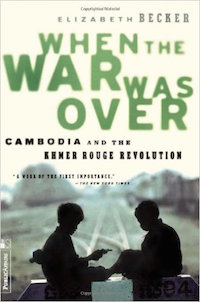 When The War Was Over: Cambodia And The Khmer Rouge Revolution
When The War Was Over: Cambodia And The Khmer Rouge Revolution
by Elizabeth Becker
Award-winning journalist Elizabeth Becker started covering Cambodia in 1973 for The Washington Post, when the country was perceived as little more than a footnote to the Vietnam War. Then, with the rise of the Khmer Rouge in 1975 came the closing of the border and a systematic reorganization of Cambodian society. Everyone was sent from the towns and cities to the countryside, where they were forced to labor endlessly in the fields. The intelligentsia were brutally exterminated, and torture, terror, and death became routine. Ultimately, almost two million people—nearly a quarter of the population—were killed in what was one of this century’s worst crimes against humanity.
When the War Was Over is Elizabeth Becker’s masterful account of the Cambodian nightmare. Encompassing the era of French colonialism and the revival of Cambodian nationalism; 1950s Paris, where Khmer Rouge leader Pol Pot received his political education; the killing fields of Cambodia; government chambers in Washington, Paris, Moscow, Beijing, Hanoi, and Phnom Penh; and the death of Pol Pot in 1998; this is a book of epic vision and staggering power. Merging original historical research with the many voices of those who lived through the times and exclusive interviews with every Cambodian leader of the past quarter century, When the War Was Over illuminates the darkness of Cambodia with the intensity of a bolt of lightning.
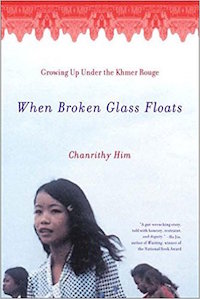 When Broken Glass Floats: Growing Up Under the Khmer Rouge
When Broken Glass Floats: Growing Up Under the Khmer Rouge
by Chanrithy Him
Chanrithy Him felt compelled to tell of surviving life under the Khmer Rouge in a way “worthy of the suffering which I endured as a child.”
In the Cambodian proverb, “when broken glass floats” is the time when evil triumphs over good. That time began in 1975, when the Khmer Rouge took power in Cambodia and the Him family began their trek through the hell of the “killing fields.” In a mesmerizing story, Him vividly recounts a Cambodia where rudimentary labor camps are the norm and technology, such as cars and electricity, no longer exists. Death becomes a companion at the camps, along with illness.
Yet through the terror, Chanrithy’s family remains loyal to one another despite the Khmer Rouge’s demand of loyalty only to itself. Moments of inexpressible sacrifice and love lead them to bring what little food they have to the others, even at the risk of their own lives. In 1979, “broken glass” finally sinks. From a family of twelve, only five of the Him children survive. Sponsored by an uncle in Oregon, they begin their new lives in a land that promises welcome to those starved for freedom. 15 black and white illustrations
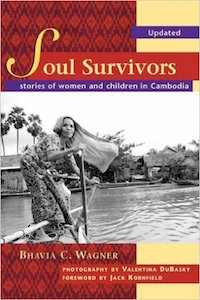 Soul Survivors – Stories of Women and Children in Cambodia
Soul Survivors – Stories of Women and Children in Cambodia
by Bhavia C. Wagner
Soul Survivors gives voice to women and children in Cambodia who survived the genocide (1975 – 1979), when nearly two million people died from execution, starvation, or disease. Through their detailed personal stories, fourteen people reveal the brutality of Pol Pot’s regime, how they managed to survive, and what it took to rebuild their lives afterward.
Although the survivors lives are fraught with suffering and times of despair, there is an under current of hope, courage, and resilience that comforts and inspires. Their stories are a testimony to the strength and goodness of the human spirit.
Twelve of the fourteen survivors who tell their stories in Soul Survivors stayed in Cambodia after the genocide and worked against the odds to bring their family fragments back together and reclaim their culture. The fascinating details about life and traditions in Cambodia are revealed through their tales as the survivors come from a wide variety of backgrounds, including a medical doctor, classical dancer, landmine survivor, Buddhist nun, Muslim fisherwoman, Christian farmer, orphan, high school teacher, prostitute, silk weaver, social worker, and women’s leader.
This second edition of Soul Survivors was published as Cambodia’s genocide trial began in 2008. The perpetrators, top leaders of the Khmer Rouge regime, are being held accountable for mass murder and crimes against humanity 30 years after the tragedy.
This new edition is updated and contains recent historical events and an epilog telling what happened to the survivors since the first edition was published in 2002.
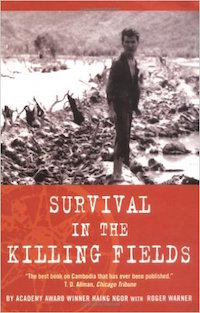 Survival in the Killing Fields
Survival in the Killing Fields
by Haing Ngor & Roger Warner
Nothing has shaped my life as much as surviving the Pol Pot regime. I am a survivor of the Cambodian holocaust. That’s who I am,” says Haing Ngor. And in his memoir, Survival in the Killing Fields, he tells the gripping and frequently terrifying story of his term in the hell created by the communist Khmer Rouge. Like Dith Pran, the Cambodian doctor and interpreter whom Ngor played in an Oscar-winning performance in The Killing Fields, Ngor lived through the atrocities that the 1984 film portrayed. Like Pran, too, Ngor was a doctor by profession, and he experienced firsthand his country’s wretched descent, under the Khmer Rouge, into senseless brutality, slavery, squalor, starvation, and disease—all of which are recounted in sometimes unimaginable horror in Ngor’s poignant memoir.
Since the original publication of this searing personal chronicle, Haing Ngor’s life has ended with his murder, which has never been satisfactorily solved. In an epilogue written especially for this new edition, Ngor’s coauthor, Roger Warner, offers a glimpse into this complex, enigmatic man’s last years—years that he lived “like his country: scarred, and incapable of fully healing.”
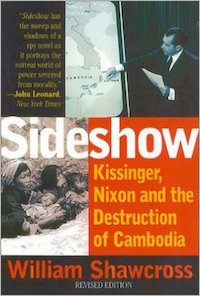 Sideshow: Kissinger, Nixon, and the Destruction of Cambodia
Sideshow: Kissinger, Nixon, and the Destruction of Cambodia
by William Shawcross
Although there are many books and films dealing with the Vietnam War, Sideshow tells the truth about America’s secret and illegal war with Cambodia from 1969 to 1973. William Shawcross interviewed hundreds of people of all nationalities, including cabinet ministers, military men, and civil servants, and extensively researched U.S. Government documents.
This full-scale investigation?with material new to this edition?exposes how Kissinger and Nixon treated Cambodia as a sideshow. Although the president and his assistant claimed that a secret bombing campaign in Cambodia was necessary to eliminate North Vietnamese soldiers who were attacking American troops across the border, Shawcross maintains that the bombings only spread the conflict, but led to the rise of the Khmer Rouge and the subsequent massacre of a third of Cambodia’s population.
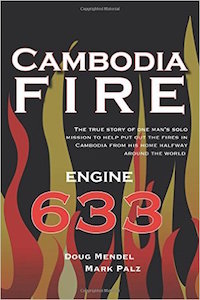 Cambodia Fire: The true story of one’s man’s solo mission to help put out the fires in cambodia from his home half-way around the world.
Cambodia Fire: The true story of one’s man’s solo mission to help put out the fires in cambodia from his home half-way around the world.
by Douglas Mendel
On the morning of April 8, 2006, a pale green, twenty-eight-foot-long, 1976 FireMaster fire truck-Engine 633-drove away from a port in Sihanoukville, Cambodia, after traveling some 8,500 miles from Colorado’s Rocky Mountains. It had just cleared customs and was en route to a small fire station six kilometers away.
Just two years before that, Captain Sok, Sihanoukville’s fire chief, told author Douglas Mendel that his town was in need of a new fire truck. Mendel made it happen. In Cambodia Fire, Mendel shares the story of how he came to visit Cambodia, how it changed his life and the lives of numerous Cambodian people, and how he began his journey to help them with firetrucks, supplies, and gear to make their lives safer and better.
This memoir tells how the delivery of the fire truck was only one of dozens of projects and years of work in connection with the Douglas Mendel Cambodian Relief Fund. Cambodia Fire narrates how the country of Cambodia and its warm, loving people have shaped the last seventeen years of Mendel’s life.
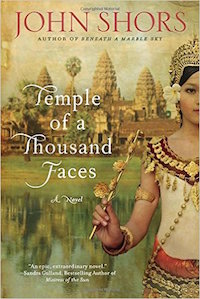 Temple of A Thousand Faces- Fiction
Temple of A Thousand Faces- Fiction
by John Shors
Temple of a Thousand Faces, he brings to life the legendary temple of Angkor Wat, an unrivaled marvel of ornately carved towers and stone statues. There, in a story set nearly a thousand years ago, an empire is lost, a royal love is tested, and heroism is reborn.
When his land is taken by force, Prince Jayavar of the Khmer people narrowly escapes death at the hands of the conquering Cham king, Indravarman. Exiled from their homeland, he and his mystical wife Ajadevi set up a secret camp in the jungle with the intention of amassing an army bold enough to reclaim their kingdom and free their people. Meanwhile, Indravarman rules with an iron fist, pitting even his most trusted men against each other and quashing any hint of rebellion.
Moving from a poor fisherman’s family whose sons find the courage to take up arms against their oppressors, to a beautiful bride who becomes a prize of war, to an ambitious warrior whose allegiance is torn–Temple of a Thousand Faces is an unforgettable saga of love, betrayal, and survival at any cost.
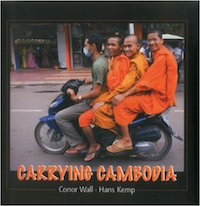 Carrying Cambodia by Hans Kemp
Carrying Cambodia by Hans Kemp
Unbelievable feats of transportation are an everyday occurrence on the streets of Cambodia. Tuk-tuks, cyclos, cars, trucks, motorbikes and bicycles transport loads that defy your wildest imagination. Tuk-tuks crammed to the roof with fruit and veg, beaten-up old taxis transporting pigs bigger than people, beds bigger than pigs and water tanks bigger than beds! Six people on one small motorbike, and sixty-seven people standing on the back of a flatbed lorry.
Photographers Hans Kemp and Conor Wall spent hundreds of long, painful hours on the back of motorbikes documenting this unique street culture, resulting in this amazing book loaded with incredible photographs that will forever change your definition of “packed!”
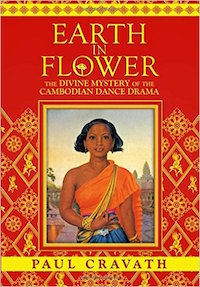 Earth in Flower – The Divine Mystery of the Cambodian Dance Drama
Earth in Flower – The Divine Mystery of the Cambodian Dance Drama
by Paul Cravath & Kent Davis
An extraordinary account of Southeast Asia’s most esoteric female performing art: the ancient Cambodian ballet. Since the dawn of recorded history, Khmer royalty nurtured a spiritual dance unique to their kingdom. Today, people worldwide instantly recognize the style, mistakenly associating it with Siam and Thailand. In fact, the Siamese captured the mystical dancers and their secrets upon conquering the Khmers in the 15th Century.
In 1975, another wartime twist of fate gave University of Hawaii researcher Paul Cravath rare access to the formerly sequestered troupe of royal dancers, their teachers, theater and archives. The author thoroughly covers the topics of choreography, musicology, costuming and stagecraft. More surprising is learning how profoundly these women affected regional history for a millennium, as goddesses, priestesses, queens, concubines, hostages and diplomats. Earth in Flower gives new insights into this beautiful art, its dancers and how their rituals balance the Khmer relationship between heaven and earth.
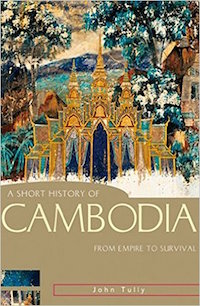 A Short History of Cambodia: From Empire to Survival
A Short History of Cambodia: From Empire to Survival
by John Tully
In this concise and compelling history, Cambodia’s past is described in vivid detail, from the richness of the Angkorean empire through the dark ages of the 18th and early-19th centuries, French colonialism, independence, the Vietnamese conflict, the Pol Pot regime, and its current incarnation as a troubled democracy.
With energetic writing and passion for the subject, John Tully covers the full sweep of Cambodian history, explaining why this land of contrasts remains an interesting enigma to the international community. Detailing the depressing record of war, famine, and invasion that has threatened to destroy Cambodia, this discussion shows its survival to be a testament to the resilience of the human spirit.
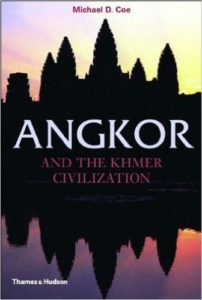 Angkor & the Khmer Civilization
Angkor & the Khmer Civilization
by Michael D. Coe
The classic-period Khmer kings ruled over their part-Hindu and part-Buddhist empire from AD 802 for more than five centuries. This period saw the construction of many architectural masterpieces, including the huge capital city of Angkor, with the awe-inspiring Angkor Wat, the world’s largest religious structure. Numerous other provincial centers, bound together by an impressive imperial road system, were scattered across the Cambodian Plain, northeast Thailand, southern Laos, and the Delta of southern Vietnam. Khmer civilization by no means disappeared with the gradual abandonment of Angkor that began in the fourteenth century, and the book’s final chapter describes the conversion of the Khmer to a different kind of Buddhism, the move of the capital downriver to the Phnom Penh area, and the reorientation of the Khmer state to maritime trade.
Angkor and the Khmer Civilization presents a concise but complete picture of Khmer cultural history from the Stone Age until the establishment of the French Protectorate in 1863, and is lavishly illustrated with maps, plans, drawings, and photographs. Drawing on the latest archaeological research, Michael D. Coe brings to life Angkor’s extraordinary society and culture. 130 illustrations, 22 in color.
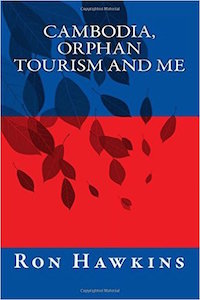 Cambodia, Orphan Tourism and Me
Cambodia, Orphan Tourism and Me
by Ron Hawkins
This is the first book written from the viewpoint and experiences of an ‘orphanage tourist’. Framed by my time working at a HIV orphanage, I look at the dangers of the current fad of orphanage tourism and the creation of an orphan culture which is being supported by orphanage tourism.
Cambodia has never recovered from the murderous Khmer Rouge years. I review the wider problems within Cambodian society which are perpetuating the break down of an already torn social fabric: forced evictions, the impact of sex trafficking, the current state of the Kingdom under a dictatorship, violent crime and the ongoing exploitation of women and children. I also detour into Indonesian ghost movies, Buddhist ceremonies, and my own absurd and probably dangerous predicament. If you are interested in Cambodia, thinking about some kind of orphanage tourism, or wishing to travel in Cambodia, this book will give you a perspective you won’t get in the travel guides.
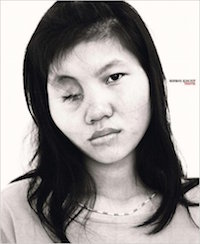 Traffik
Traffik
by Norman J Roy
While on assignment for Glamour’s “Women of the Year” portfolio, photographer Norman Jean Roy was introduced to Somaly Mam, a former Cambodian sex slave who was being honored for her work rescuing women trapped in the sex industry and reintegrating them into society. Overwhelmed by her story and haunted by the faces of the women she’d worked with, Roy decided to spearhead Traffik, a project that would expose and elevate the grave reality and gross injustice of their experiences.
In January 2008, Roy returned to Cambodia to begin the emotionally taxing work of photographing the victims of the country’s notorious sex trade. With the help of Mam and her organization AFESIP, Roy was given access to brothels, where he observed and documented the harrowing lives of adolescent and child prostitutes in situ, as well as AFESIP rehabilitation centers, where he interacted with those whose lives had finally taken a turn for the better, thanks to Mam’s tireless work. Captured in the book are the powerful stories of young women like Srey Ny, who was beaten and raped by her family and sold to a brothel where she was tortured and starved, and Sok Muteta, who was sold by her mother for 10 U.S. dollars and was first raped at the age of four. Both girls were rescued and are now in AFESIP’s care.
Traffik presents images of an industry that doesn’t just sell sex; young women and children are routinely bartered, exchanged, and sold across international borders, resulting in a soulless flow of human traffic. Part exposé and part call to action, Roy’s intimate and affecting photographs are aimed toward giving these victims a voice that will resonate across Cambodia’s borders.
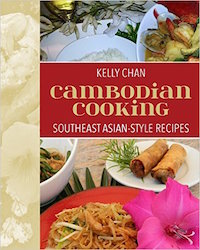 Cambodian Cooking, Southeast Asian-Style Recipes
Cambodian Cooking, Southeast Asian-Style Recipes
by Kelly Chan
All of Cambodia’s robust flavors, fresh ingredients, and inventive dishes are right at your fingertips. Whether you’re a new cook just learning the ropes or a seasoned pro, Chan’s helpful hints and time saving shortcuts make cooking Asian style meals easier than ever.
From stir fried rice noodles with chicken to a peanut vinaigrette lime sauce that can be used on virtually everything, Cambodian Cooking: South East Asian Style is a delicious way to explore your world.
All of the recipes in Chan’s inventive cookbook are grouped together by ingredients. This means you won’t have to buy dozens of different items that can only be used for one dish, guaranteeing that you’ll never waste food—or fridge space—again.
While all the ingredients are easily available at your nearest Asian grocery store, each recipe welcomes substitutions to conform to your own family’s specific dietary needs.
Discover how to create flavorful soups, appetizers, mains, and more in a fresh new cookbook that is sure to become a classic.
Kids Book Recommendations
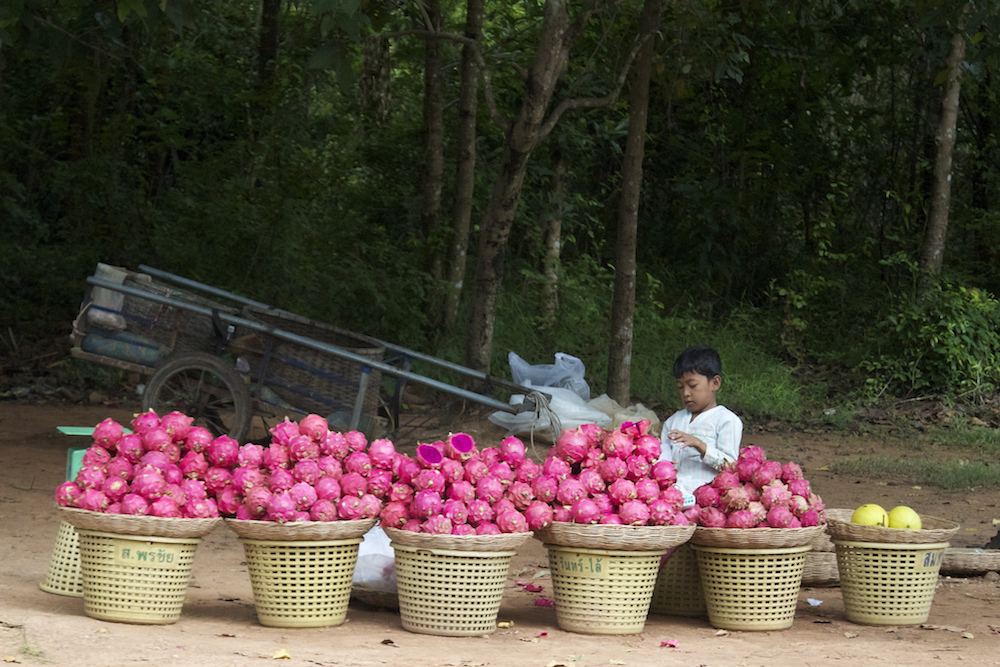
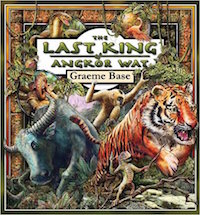 The Last King of Angkor Wat
The Last King of Angkor Wat
by Graeme Base
Among the ruins of Angkor Wat, Tiger, Monkey, Water Buffalo, and Gecko argue over who would make the greatest king. An ancient elephant suggests a race to the top of the hill to prove each creature’s speed, strength, and cunning. But along the way, their strengths and weaknesses are revealed. Will any of them be good enough to be king?
Graeme Base’s luscious illustrations of the Cambodian temple complex Angkor Wat—one of the most beautiful ruins in existence and known to people all over the world—are combined with a search-and-find feature in this exciting new tale! A brief history of the temple is included.
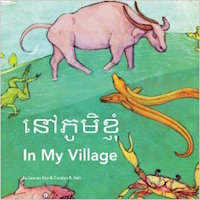 In My Village
In My Village
by Lauren Iida
This Khmer-English bilingual story highlights things children would find in a typical village in Cambodia. This story is a beautiful journey into the traditional Khmer lifestyle. Illustrated collaboratively by a group of Seattle-based artists in paint, cut paper, woodblock print and more. Proceeds benefit rural Cambodian library through Seattle-based arts and literacy non-profit, The Antipodes Collective.
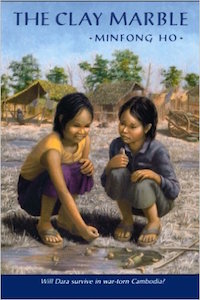 The Clay Marble
The Clay Marble
by Minfong Ho
Grade 5-9– After the fall of the Khmer Rouge, 12-year-old Dara, her older brother Sarun, and their mother journey to the Thai border in search of food. Here they meet the remnants of another Cambodian family, one of whose members, Jantu, becomes Dara’s friend; another, Nea, falls in love with Sarun. Life is going along well until infighting among neighboring guerrilla groups forces the families to flee again. In the confusion, Dara and Jantu become separated from the main group. After many incidents, they are reunited with their families, although Jantu is shot in the process and dies soon after. Sarun, once a proud farmer, wants to join the military. Dara courageously stands up to him, and convinces him to return home with the family.
The title comes from Jantu’s effervescence and manual dexterity, the combination of which impresses Dara as magic. She believes a clay marble, having been invested with Jantu’s magic, gives her the courage to get through her ordeals. Dara and Jantu are well drawn, but the rest of the characters are not much more than pasteboard figures. Ho excels at tropical description, evoking climate and flaura with skill. The contrasts of frantic activity and enervating inaction of refugee life are also vividly depicted. However, Dara’s vocabulary when she thinks to herself does not ring true for her age; few 12-year-olds would consciously characterize themselves as “irritable” or others as “glib”–certainly not illiterate 12-year-olds from rural areas. Older children might find this novel of interest for its historical milieu or slice-of-life realism, albeit from a different reality. –John Philbrook, San Francisco Public Library
Copyright 1991 Reed Business Information, Inc.
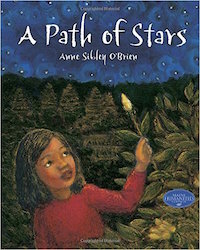 A Path of Stars
A Path of Stars
by Anne Sibley O’Brien
A touching story of family, loss, and memory.
Dara’s grandmother, Lok Yeay, is full of stories about her life growing up in Cambodia, before she immigrated to the United States. Lok Yeay tells her granddaughter of the fruits and plants that grew there, and how her family would sit in their yard and watch the stars that glowed like fireflies. Lok Yeay tells Dara about her brother, Lok Ta, who is still in Cambodia, and how one day she will return with Dara and Dara’s family to visit the place she still considers home. But when a phone call disrupts Lok Yeay’s dream to see her brother again, Dara becomes determined to bring her grandmother back to a place of happiness.
Anne Sibley O’Brien’s dreamlike illustrations beautifully complement this fictional story based on real-life experiences. Back matter contains information about the admission of Cambodian refugees into the United States, specifically Maine, after soldiers forced them out of their homeland in the 1970s. An author’s note and glossary are also included.
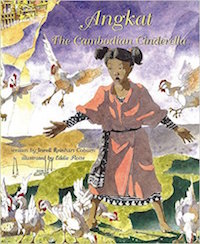 Angkat: The Cambodian Cinderella
Angkat: The Cambodian Cinderella
by Jewell Reinhart Coburn
In the first English retelling of this ancient Cambodian tale, our heroine goes further, survives more, and has to conquer her own mortality to ragain her rightful place. Angkat—child of ashes—endures great wrongs as she seeks to rise above the distresses caused by her own family. Angkat appeared in an 18th century French essay which was found by Dr. Coburn deep in some dusty archives while she was researching Khmer culture and folklore. The artist effectively employed dramatic expressions, gestures, and ambiance in each illustration. This ancient and truly captivating version of the Cinderella story will delight and enthrall readers of all ages.
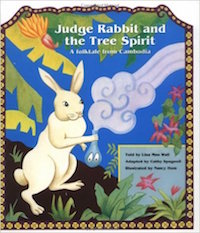 Judge Rabbit and the Tree Spirit: A Folktale from Cambodia
Judge Rabbit and the Tree Spirit: A Folktale from Cambodia
by Lina Mao Wall
In this well-known Cambodian tale, Judge Rabbit solves the problem of a mischievous tree spirit that has taken on human form.
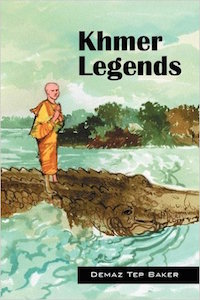 Khmer Legends
Khmer Legends
by Demaz Tep Baker
Khmer legends have been passed on orally from generation to generation by story tellers and by grandparents to their children and grandchildren. These stories will be sure to inspire your curiosity and transport you to a faraway land where animals have special powers and the belief in spirits is still alive. Whether you are an adult or a child, you will enjoy these imaginative Cambodian folk tales.
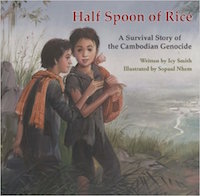 Half Spoon of Rice: A Survival Story of the Cambodian Genocide
Half Spoon of Rice: A Survival Story of the Cambodian Genocide
by Icy Smith
Nine-year-old Nat is forced out of his Cambodian home and marched into the countryside when the Khmer Rouge comes into power. Nat is separated from his family and endures forced labor in rice fields from dawn to midnight with little food. Over the next four years, Nat confronts starvation, fear, and brutality. With the help of his friend Malis, Nat finds hope and the strength to escape, eventually reuniting with the family he loves.
Half Spoon of Rice is based on true stories of courage, friendship, survival, and the triumph of the human spirit. The book features vivid illustrations and historical photographs documenting the Cambodian genocide from 1975 to 1979. Book Awards: Benjamin Franklin Silver Award California Book Award Finalist Society of School Librarians International Honor Award Cooperative Children Book Center Choices Skipping Stones Honor Award Moonbeam Children’s Book Award.
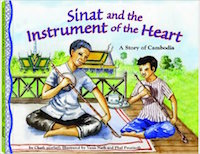 Sinat & The Instrument of the Heart: A Story of Cambodia
Sinat & The Instrument of the Heart: A Story of Cambodia
by Chath pierSath, Vann Nath, & Phal Pouriseth
Sinat is a young boy from Cambodia. He learns to play a thousand-year-old string instrument from its last great living master. This story is based on the real-life experience of a Cambodian boy named Sinat, whose actual musical performance is featured on the audio CD that is featured with this book.
Sinat & the Instrument of the Heart gives readers a fun and unique insight of a different culture, and a sense of what life might be like for a child growing up in Cambodia. An audiobook is also included with select purchases to download at soundprints.com.
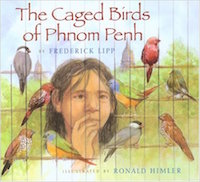 The Caged Birds of Phnom Penh
The Caged Birds of Phnom Penh
by Frederick Lipp & Ronald Himler
Though eight-year-old Ary has heard about the rural rice fields where birds fly free, she lives in the Cambodian capital where the “yellow winds grew gray. Gray winds were difficult to breathe.” The only birds she knows are “prisoners” in the cage of the bird lady, who sells them to tourists. After the girl uses her savings to purchase a bird, she sets it free since, according to local custom, giving a caged bird its freedom makes wishes come true. But her bird immediately returns to the safety of the cage.
On a second attempt, after considering advice from her grandfather, she purchases a sickly bird that “held a secret long forgotten by the other birds.” This one soars into the sky and on to freedom. The author includes some heavy-handed imagery (“This is our cage, Ary thought, as she lay her head on the mat”), but his thought-provoking, open-ended conclusion shows the tale in a new light. Himler’s appealing art conveys the girl’s changeable emotions as well as the heroine’s intelligence and optimism as she interacts with the world around her. Ages 4-8. (Mar.)
Copyright 2001 Reed Business Information, Inc.
Film Recommendations
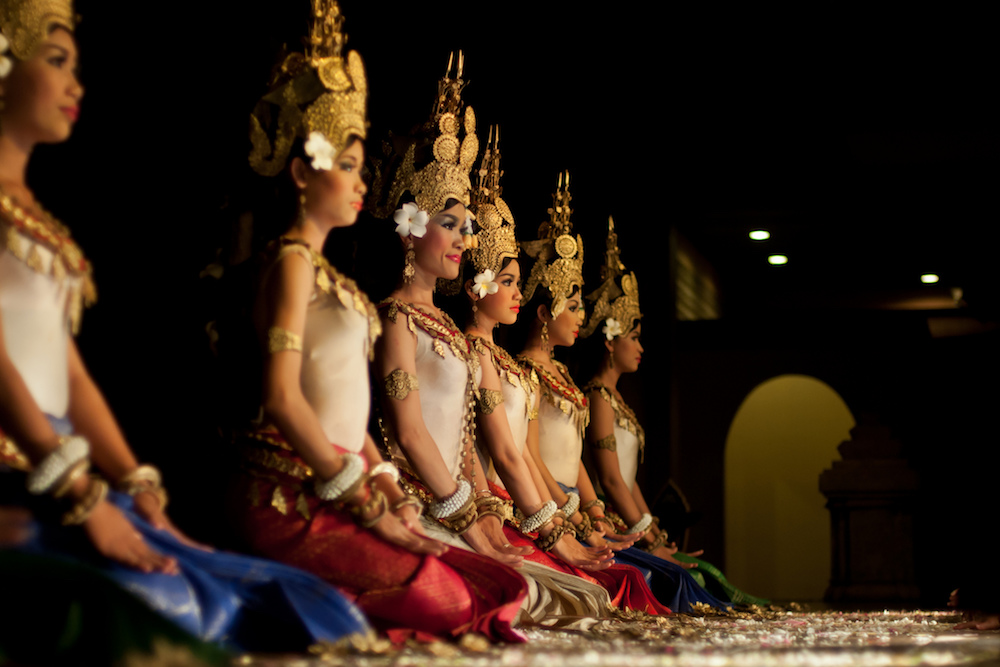
Cambodia´s Garment Industry
The economic downturn from 2008/2009 through the prism of workers and their families, unionists, small vendors surrounding the factories and a female Cambodian manager.
This documentary contains:
Short documentary – A Day at the Factory
Short documentary – A Day Outside the Factory
Short documentary – A Day Off From the Factory
Short documentary – A Weekend with the Manager
History Channel Documentary: Ancient Discoveries: Angkor Wat, Cambodia
Beginning of the war in Cambodia 1970
Cambodia’s Child Sex Trade Is Spiraling Out of Control
Chanting ‘yum yum’, the slang for oral sex, girls clamour for attention in a back streets brothel. They are ten years old. “Cambodian men believe that having sex with virgins boosts their sexual appetite, their strength, their integrity,” explains Mu Sochua, Minister for Women’s Affairs. Sunremita was tricked by her mother into prostitution to make money for her sick relatives. But the proliferation of child prostitutes is down to more than just poverty — rife corruption also compounds the problem. In Svey Pak, police storm a brothel. A few girls are collected, but pimps and owners are left in peace. “For every single hour that [the brothels] operate the police are paid to let them,” states Sochua. Even when paedophiles are arrested, it seems easy to escape justice. Photos of padlocks locked around the genitals of a 13-year old boy clearly show sexual abuse. But the French national accused walked away from court free, despite photos and the testimony of ten boys. Pol Pot tried deliberately to destroy the family; greed and corruption will hopefully not finish the job.
Cambodia’s Other Lost City: French Colonial Phnom Penh
Inside Pol Pot Secret Prison (The S-21) [HQ] Part 1/4
INSIDE POL POT’S SECRET PRISON is a harrowing look at one of the most purely evil institutions of the 20th century. Riveting interviews with former guards, executioners and two survivors paint a picture of the unspeakable horrors that were commonplace at S-21. The incredibly detailed prison archives open a window into the Khmer Rouge’s program of genocide, raising the question of why no one has been prosecuted so far for the crimes against humanity committed in Cambodia.INSIDE POL POT’S SECRET PRISON also includes an interview with journalist Nate Thayer, who interviewed the ailing former dictator just months before his death.
Inside Pol Pot Secret Prison (The S-21) [HQ] Part 2/4
Inside Pol Pot Secret Prison (The S-21) [HQ] Part 3/4
Inside Pol Pot Secret Prison (The S-21) [HQ] Part 4/4 END
Maternal and infant mortality in Cambodia documentary
The Landmine Girls
Cambodia Bokator
Arman lives and trains in Kim Sean’s school, located in the slums of Phnom Penh, before travelling to the ancient Bokator temples of Angkor for a final showdown with San Kim Sean’s top fighter.
Apsara Dance 1966 with Princess Buppha Devi
Women & Climate Change in Cambodia
The Killing Fields (1984)
Same, Same But Different
City of Ghosts
Missing Picture
Cambodian Shadow Puppet Theater
Article Recommendations
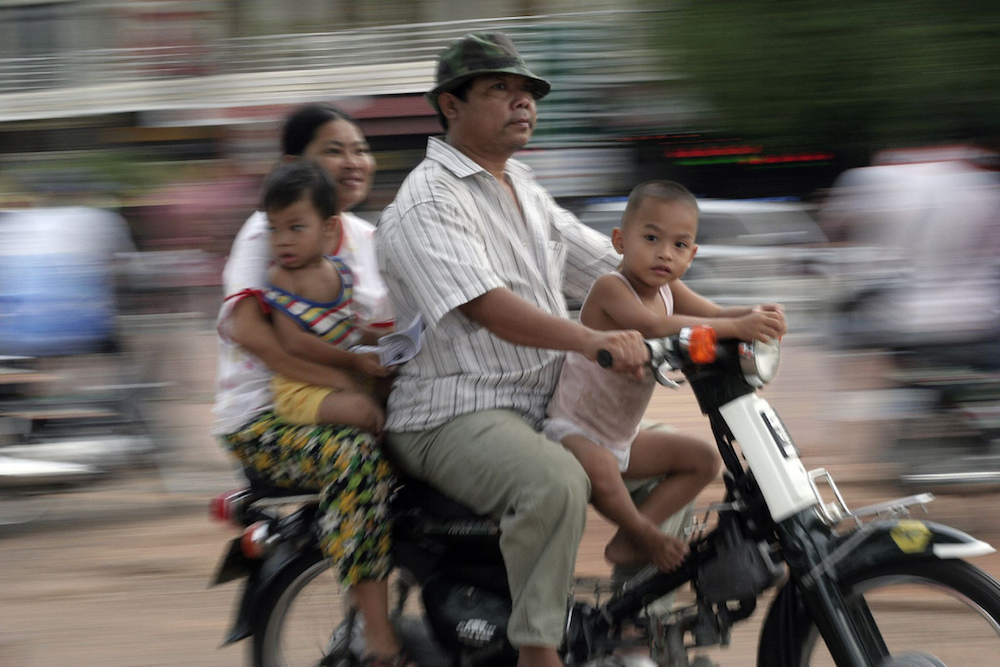
Sbek Thom: Kmer Shadow Theater – UNESCO
Cambodian Dance – Devata.org
Health Care in Cambodia – Cultural Survival
World Food Program: Current Issues, Cambodia
The Issues of Women’s Rights, Child Rights and Migrant Rights in Cambodia – ADHOC
How Bad is Sex Trafficking in Cambodia? – Al Jazeera
International Women’s Issues: Economic Empowerment in Cambodia – Persephone
Cambodian Politics: The Velvet Glove Frays – Economist
No Rosewood of Such Virtue: On Illegal Logging – Economist
The Mekong: Requiem for a River -Economist
Laser Scans Reveal a Network of Ancient Cities in Cambodia – NY Times
Married off by the Khmer Rouge: Nobody Could Help Me – NY Times
Cambodian Garment Workers to Get $128 a Month Minimum Wage – CBC
Why Tonle Sap is the World’s Most Threatened Lake – Al Jazeera
Illegal Healers Say They Serve the Poor – Al Jazeera
Project Options:
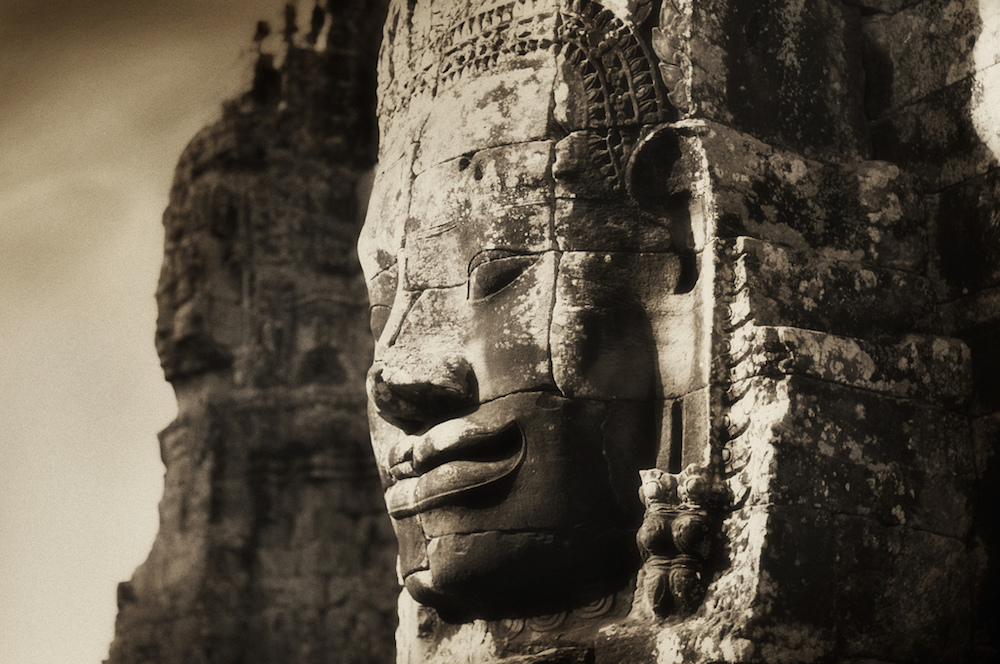
Ancient Khmer History
So much of what is currently discussed as Cambodian history is related to the past 150 years and is centered around the genocide. There are centuries of history before that. Choose a period of Cambodian history and study it. Or, put together a narrative timeline of Cambodian history. Or, put together a biographical timeline featuring major players from across the ages.
What is it that makes Cambodia’s history rich? Which period do you find most fascinating, and why? What three things did you learn about Cambodian history that surprised you?
Cambodian Monarchy
Study the Cambodian monarchy before and after the revolution. Begin at the beginning with the consolidation of the Khmer warlords in 806 CE. What happened to bring the kingdom together?
Choose your focus: Study either the historical kingdom, and the changes over the centuries, or focus on the modern kingdom and the restoration of the King after the revolution, his role in governing Cambodia and the modern application of the monarchy during reconstruction. Do you think the monarch now is a good or a bad thing? Why? In what ways does it unify the country? In what ways does it divide it?
Agriculture in Cambodia
Rice production is very important to Cambodian agriculture, but is not the only crop the country grows or depends on economically. Choose from the following list and learn more about Cambodian agriculture as you travel:
- Which other crops are significant?
- Study the scandal and international intervention surrounding sugar production in Cambodia.
- How has the recent drought affected rural populations and agriculture?
- What are solidarity groups?
- How has collectivization affected the evolution of agriculture in Cambodia?
- Examine some of the newer, more progressive test crops. What are they? How is it going?
Mekong River
The Mekong River is important to all of the countries in Southeast Asia, not just Cambodia. However, as Cambodia encompasses much of the Mekong Delta, there is a heavy reliance on the river for a number of industries and uses. Examine how the Mekong supports agriculture, industry, and culture in Cambodia. How is the development of the river affecting these things?
Puppet Theater
In recent decades, as Cambodia has recovered, there has been a resurgence of the Arts. Puppet theater is one of the oldest Khmer arts and has a long tradition in Cambodia. Where and when did puppet theater begin? What are the puppets made of? What stories do they tell? Why is preservation of this art important to Cambodian culture? Try to see a live production while you are in Cambodia. Consider visiting a theater, interviewing actors and participants, or studying the construction of the puppets themselves.
Khmer Classical Dance
With a centuries long tradition, Khmer classical dance is still performed for ceremonies and celebrations. It’s possible that you’ll see a performance in Phnom Penh, or at Angkor Wat. Study the history of classical dance, from the pre-Angkor era, clear through Colonialism and the revolution to present day. How have these dances been preserved? Who were the dancers, traditionally? Who are they now? Why were the dances performed, traditionally? Why are they now? If you can, attend a classical dance performance.
Year Zero
It’s impossible to avoid the recent history of the genocide in Cambodia. Take a look at “Year Zero” and the very beginning of the revolution headed by Pol Pot. What was the catalyst for the movement? Why did they declare Year Zero. What was meant by the idea of Year Zero? What were they trying to accomplish? What was the ideology behind the actions they took. Try to examine this philosophy with as little judgement as possible. Look as purely as you can at the ideas alone.
Pol Pot
Do a biographical study of the leader of the revolution. Who was he? Where did he come from? Where was he educated? How did he come into the ideology he later espoused and applied to Cambodia? What was his role during the revolution? What does he say about himself and the movement? (Find the interviews). What did those who worked and lived with him most closely have to say about him? Who were his greatest critics? Who were his greatest supporters? How did he come to power? Why was he not tried for war crimes? How did he die?
Tuol Sleng Prison
Visit Tuol Sleng Prison in Phnom Penh. Walk through the rooms, look at the pictures and exhibits and stand with the history of the genocide. The only assignment for this is to attend. To think. To remember. And then to consider how this applies to modern life, your life specifically.
The Killing Fields
Visit the Killing Fields outside of Phnom Penh. How are they different from the Tuol Sleng Prison? What happened here? What is happening her now? Again, the only assignment is to attend and to sit with the history.
Profiles of …..
Conduct a series of at least five interviews within Cambodia. The point of the exercise would be to get a well rounded view of what it is like to live in the Cambodia from a variety of ages, incomes, employments and experiences. This could be conducted as video, or as text. Do an in depth analysis of the experience/information.
People you might profile:
- Farmers
- Teachers
- Restaurant owners/workers
- Religious leaders
- Government officials
- Doctors or nurses
- Cafe owners
- Street vendors
- Children
- Parents
- Drivers
- Artists or musicians
- Laborers
- Cab drivers
- Long term expats
- Shop owners or workers
Angkor Wat
Angkor Wat is a beautiful mystery. It will take several days to visit it thoroughly but it’s well worth the time. While you are there, delve into the mystery behind the ruins, the people who built them, the stories told on the walls through the carvings and the Hindu influence in what has become a Buddhist land.
Who build Angkor Wat and why? Who rediscovered it, and when? Are there other cities like it in Southeast Asia? If so, where are they and how are they related? Explore the religious history of the ruins. Study the political history of the kingdom and how power was centralized here. Which is your favourite section, and why?
Problems & Solutions
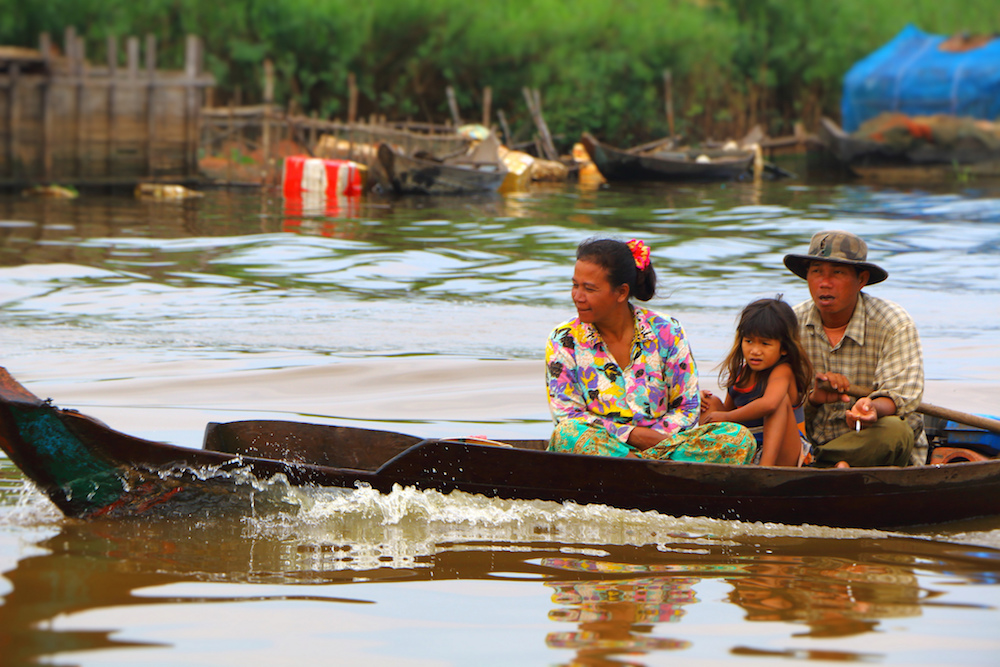
Orphanage Tourism
Orphan tourism has become a huge problem in Cambodia. Some estimates say that as many as half of the children in Cambodian orphanages are not orphans at all. Study the situation for orphans in Cambodia and examine how, exactly, orphanages became big business? Who is profiting? What is the human cost? Examine some of the worst offenders. Are there orphanages that are legitimate in Cambodia? If so, who’s running them and how? Consider the ethics of working with vulnerable populations, what are our responsibilities as well-intentioned “helpers?” What are the common responses to the orphan situation in Cambodia and other places?
Tonle Sap Lake
The water level in Tonle Sap lake is dropping and fish populations are falling at a frightening rate. Commercial fishing has been banned. What is the current situation on the lake? Who is suffering most and why? What initiatives are underway to help conserve and rejuvenate the lake?
Human Trafficking and Sexual Exploitation
Cambodia has a very bad human rights record where human trafficking and sexual exploitation are concerned. From men kidnapped and traded into the Thai fishing industry as slaves, to women and children who are sold by their families into the sex trade. Choose just one aspect of this problem to examine. Narrow your focus and tell the stories that you find. Instead of a broad lens of the enormity of the problem, try to remember that each person is an individual and examine the broader themes at the personal level.
Secondary question: How do we, as foreigners, contribute to the problem? You might examine sex tourism and the role expats have played in exacerbating the situation (hint: look for news stories) or you might dig into where the products produced with slave labor are consumed and consider the supply chain and our role in it at various points along the way.
Healthcare and Malnutrition
Healthcare is a huge problem in Cambodia, both in access and affordability. Maternal death rates from childbirth are the highest in Asia. The UN World Food Program estimates that 40% of children under 5 in Cambodia are chronically malnourished. HIV continues to be a significant health problem and diseases like malaria still claim many lives.
Examine some solutions on the local level. Are there community projects that are making progress? Interview a health worker about their work and the needs of their community. Where is the help coming from? What is most valuable in terms of the long term goal of improving healthcare? What are the necessary “bandaid” measures in order to save lives? What are the factors that stand in the way of improving healthcare and addressing malnutrition more quickly in Cambodia?
PTSD
“Cambodian psychiatrist Muny Sothara considers as many as 47% of the population there to be suffering from Posttraumatic Stress Disorder (PTSD),” as a result of the atrocities perpetrated upon them during the reign of the Khmer Rouge.
Study up on what PTSD is, what causes it and how it is treated. How does PTSD affect the daily lives of people who have it? Is there a genetic component? How is this culture wide trauma affecting Cambodia and it’s ability, as a nation, to “bounce back” from the revolution?
Cultural Assignment Options
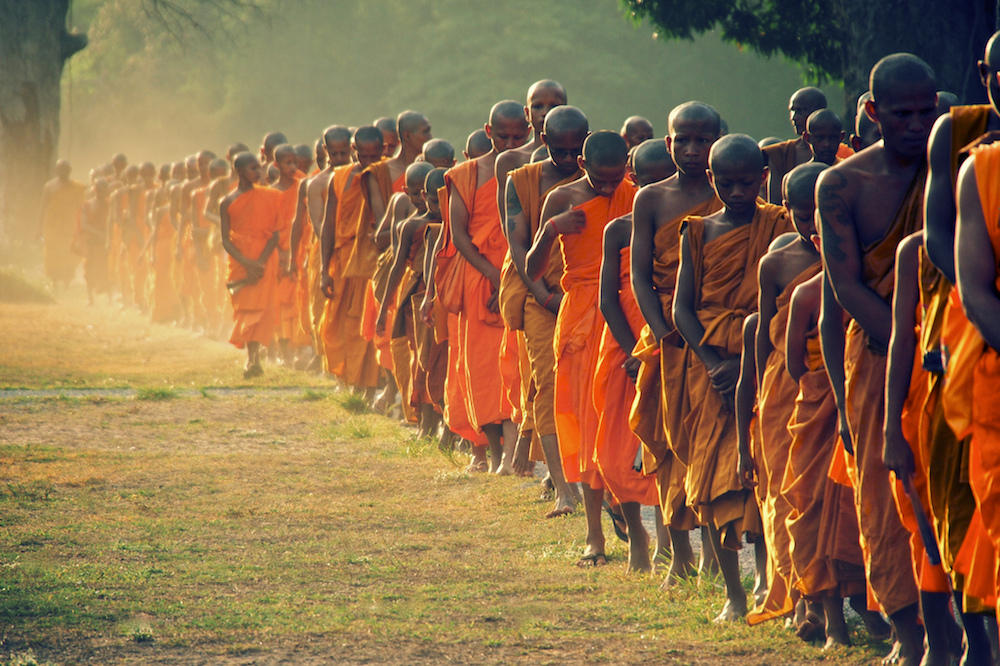
The purpose of the Cultural Assignment Options is to help you connect more deeply with the people and culture of Cambodia. By digging in on a personal level, we make meaningful connections to a place that are carried over into other parts of life
Food
Cambodia has a rich food history and is also one of the most inexpensive places to eat out in Southeast Asia. Try things. Experiment with flavors. Watch how foods are cooked. Ask if new friends, or folks running food carts will teach you how to cook some basic foods. Document as many new (to you) foods as you can in Cambodia. Perhaps you want to compile a notebook of recipes as you go.
Meaningful Connections
What is a meaningful interaction? You get to decide that. In general, it should be an interaction in which cultural exchange took place and you learned something. Often this will be with a local person; sometimes it will be with another traveler.
Sometimes these interactions look like very little on the outside but are totally life changing on the inside. Other times, they are rock your world amazing from every angle. It could be a meal shared, an afternoon’s excursion, a discussion that opens your eyes in some way, a self revelation that happened without any words exchanged at all.
Spend a day with a local individual or family. Document your experience in photos, interviews and the written word. The best way to interact with locals is to just start chatting with them at markets, on tours or on the street. You can also ask other travelers if they have met anyone who has offered some insight into life in the country. If you are a family who have children attending a local school then have a party, invite a parent to coffee, basically just open up your home to new relationships.
Take a Class
There are many options! Don’t be limited by this list:
- Cooking (definitely consider taking a cooking class in France!)
- Language
- Art or Crafts
- Literature
- Yoga
- Dance
- Music
Museum Visits
Cambodia has fewer museums compared to some other countries, but several of those it does have are important. Specifically, the museums in Phonm Penh that chronicle the genocide under Pol Pot. Do not leave Cambodia without visiting Tuol Sleng and The Killing Fields, at least.
Other options include:
Artisans Angkor, in Siem Reap, which is not so much a museum as a workshop tour, but it’s an interesting window into how the traditional arts and crafts of Cambodia are produced.
Cambodian Landmine Museum, Siem Reap.
Angkor National History Museum, Siem Reap, highlights the history of the Khmer civilization.
Save your ticket stubs!
Volunteer
Volunteering is a great way to get to know a local community and give back a bit to the places that you choose to travel. There are lots of ways to do this, both organized and arranged privately, as well as impromptu opportunities that will pop up.
Vet your volunteer options carefully. Educate yourself, specifically, about the ethical quagmire of orphanage voluntourism in Cambodia. Consider you skill set and volunteer appropriately through organizations that are legitimate and responsible charities. It’s best to do some serious research first, especially in Cambodia, which has been at the center of numerous volunteering scandals and schemes.
Live local
Get out of the hostel, rent a place in a local village, or do a homestay. Through websites like Airbnb it’s easy to find places to live locally.
Photo essay or a blog description of why living local was different than living in a hostel. How did this experience change the economics of your stay? What did you learn about the way locals live? What challenged you? What would you do differently next time?
Public Transportation Project
Take as many types of public transportation as possible.
Challenge yourself to take every type of public transportation available while you are in Cambodia. Create a photo essay or videologue of your adventures. What did you learn?
Attend a Religious Observance
Cambodia is, primarily, a Buddhist country, but during the Khmer Rouge years all religion was banned. Read this piece by Bonnie Duncan, a student who spent her year abroad in Cambodia about how Buddhism Survived the Khmer Rouge to Give Hope to Cambodia. Visit local wats, as well as some of the bigger ones in the cities. Think about the ways in which religion helps people deal with and recover from crisis. Don’t be afraid to ask questions. How does the religious climate in Cambodia compare with what you grew up with?
Festivals
Food festivals, arts festivals, cultural festivals, music festivals, and more happen both at the local and national level in Cambodia. Check out the festivals happening while you are in Cambodia and make sure to hit at least one, if you can. Take pictures, participate in the events, try the foods, and party like a local!
How to Create Your Own Course Work
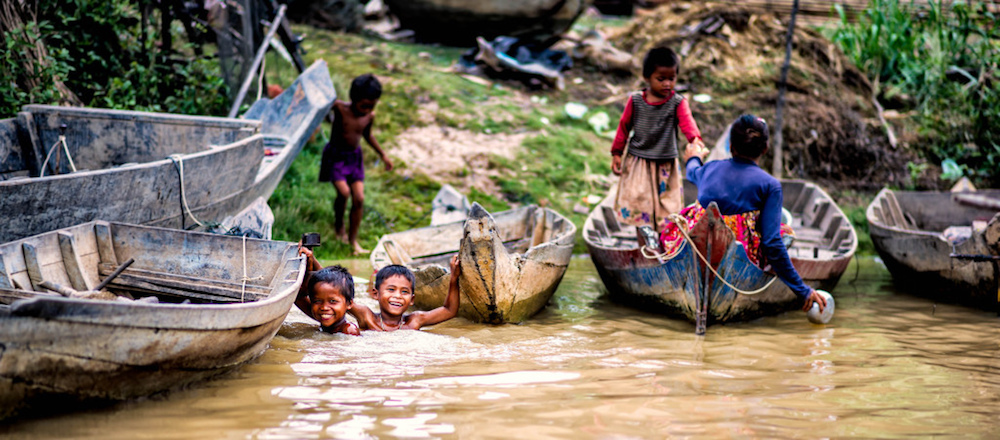
Ask
Learn to ask for what you want. If you meet someone interesting, ask them to teach you. Ask them for an interview. Ask to shadow them for a day or a week. You’ll be surprised at how eager people are to share what they know and teach when someone shows actual interest. Learn to ask questions. Learn to take social risks by putting yourself out there as a learner.
Plan
You have an idea or an interest. Something surprises you on your journey and all of a sudden you have a burning desire to know more. Plan your attack:
- Narrow your field of study to a particular question or topic.
- Compile resources: Look for teachers. Who knows what you need to know? Or who can you interview to learn more? Are there books or videos on the topic you’re interested in?
- Quantify it. How will you demonstrate what you have learned? A research paper, a video project, a photo essay, through art or music, a blog post, a published piece, an interview series, a mini documentary or do you have some other idea?
Produce
Produce a quality piece of academic work that reflects your experiential learning. The whole key to quantifying outside the box learning is to translate it into something that reflects the value of what you learned and how it contributed to your overall educational process.
Perhaps this will be as simple as a traditional research paper, depending on the depth and length of your study this could be as short as three pages or as long as a dissertation. Maybe you’ll produce a video for YouTube, or something grander, like a mini-documentary. Perhaps you’ll do something concrete instead, an art, or community action project and you’ll tell the story through a photo essay, or a series of blog posts. The possibilities are limited only by the resources you have at hand. Get creative. Think outside the box and truly experience your education.
Do You Have Anything to Add to This Resource Page?
We’re actively seeking to grow these resources in an open-source spirit. Please email jenn(at)bootsnall(dot)com with your edits or submissions of new information or materials.
Thank you!
Photo Credit: Balint Földesi, Nhi Dang, Praveen, Sara y Tzunki (Cecilia e Francesco), Sergio Carbajo, Bo Neilsen, Juan Antonio F. Segal, Tony Miller
,
